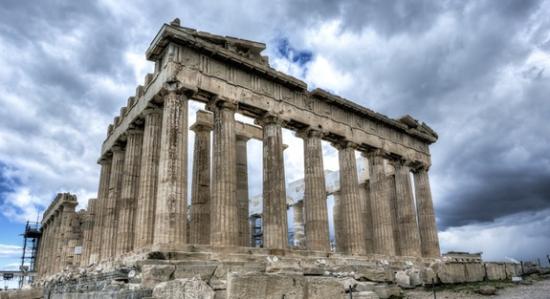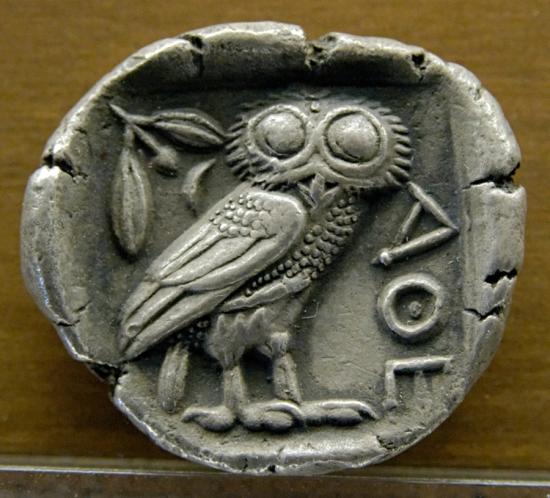Owen Jarus
Source - http://www.livescience.com/51353-silver-coins-stored-in-parthenon-attic.html?
 New research indicates millions of silver coins, the reserves of ancient Athens, were once kept in the attic of the Parthenon (shown here as it appears today). Credit: Anastasios71 / Shutterstock.com
New research indicates millions of silver coins, the reserves of ancient Athens, were once kept in the attic of the Parthenon (shown here as it appears today). Credit: Anastasios71 / Shutterstock.com
Millions of silver coins may have been stored in the attic of the Parthenon,one of the most famous structures from the ancient world, a research team says.
The attic of the Parthenon is now destroyed and the coins would have been spent in ancient times. The researchers made the discovery by reconstructing the size of the attic, analyzing ancient records to extrapolate how large the reserves may have been and re-examining archaeological work carried out decades ago.
Their evidence suggests that millions of coins made up the cash reserves of the city-state of Athens and much of this hoard was stored in the attic of the Parthenon. During the fifth century B.C., when the Parthenon was built, Athens was a wealthy city-state whose people erected fantastic buildings and fought a series of devastating wars against their rival Sparta. This vast reserve of coins would have helped fund those endeavors.
While the Parthenon's attic is now destroyed, researchers estimate its floor would have spanned an area more than three times that of a tennis court, with dimensions of 62 feet wide by 164 feet long (19 by 50 meters) and about 10 feet (3 m) high at the center. The coin reserves were likely placed there around 434 B.C., when the Parthenon was dedicated to Athena, the patron goddess of Athens.
Incredible riches
 Millions of silver tetradrachms (like the example shown here at the Museum of Fine Arts of Lyon) may have been kept in the attic of the Parthenon. Credit: Photo by Marie-Lan Nguyen, CC Attribution 2.5 Generic
Millions of silver tetradrachms (like the example shown here at the Museum of Fine Arts of Lyon) may have been kept in the attic of the Parthenon. Credit: Photo by Marie-Lan Nguyen, CC Attribution 2.5 Generic
In the fifth century B.C., Athens was one of the richest and most powerful city-states in Greece. Boasting a large navy, it exacted tribute from other Greek cities in exchange for military protection. Ancient writers say the Athenians kept vast coin reserves on the Acropolis, but don't say exactly where.
For instance, one decree dated to around 433 B.C. refers to "3,000 talents" being transferred to the Acropolis for safekeeping, a colossal sum of money, researchers say. The highest-denomination coin minted in Athens at the time was a silver tetradrachm, and it took 1,500 tetradrachms to make one talent, the researchers noted. This means the "3,000 talents" mentioned in the decree would be worth 4.5 million tetradrachms. Such a huge number of coins would have weighed about 78 metric tons, or nearly 172,000 lbs., researchers say. To put that in perspective, that's heavier than the M1 Abrams battle tank used today by American soldiers.
Remarkably, ancient writers said the Athenian reserves could, at times, reach up to 10,000 talents (potentially 260 metric tons).
Researchers caution that Athens may have minted some of its coins in gold (which was worth about 14 times more than silver). If that were the case, the number of coins (and the overall weight of the reserves) would be somewhat less, since it takes fewer gold coins to form one talent.